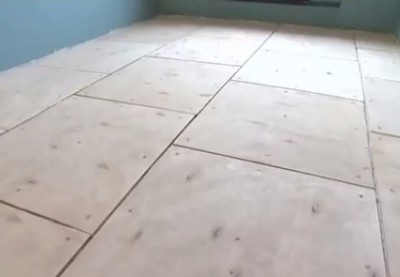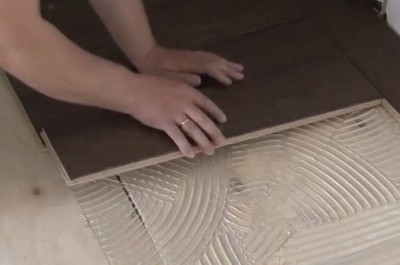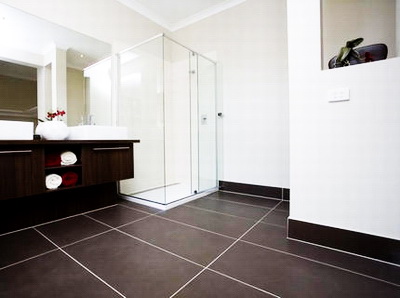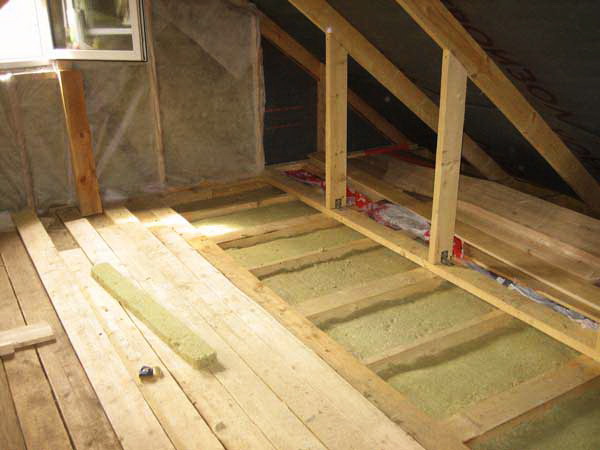Laying a massive board: we disassemble the installation work from A to Z
Laying of a massive board is carried out exclusively at the final stage of repair in the room. Only in this way can the risk of damage or deformation of the floor covering be minimized. This means that all work on installing flooring from a massive board should begin after the doors, windows are installed, the rough floor is prepared, the walls are leveled, all wet work is completed. It is highly desirable that the plaster, concrete, paint have time to dry thoroughly. In no case should indoor humidity exceed 60%. The optimum humidity of the material itself is not more than 12%. Although, for the sake of fairness, it is worth noting that the last remark about 12% is a pure theory, because with all your desire to reduce this figure, you will not be able to. This figure is only a reflection of the features (and in some cases quality) of production. A study of the products on the market showed that the moisture content of a solid ash or oak board (and other European species) is 12-15%; from exotic species (wood is processed in tropical countries) - about 18%. Perhaps, for this reason, European breeds take root better in the microclimate of our apartments.
Content
Unpacking and preparation for installation
Proper unpacking of the material and preparation for its installation will help you avoid unpleasant surprises in the future.
Remember: a solid massive board is a floor covering that you have accepted for quality. And the presence of even obvious defects in the material is now no longer a reason for return. That is why, the unpacked board should first be carefully inspected. If everything is in order, you can start sorting it - by color and pattern. Determine which boards will be used for cutting, in which places.
Unpacked and sorted boards should undergo three-day acclimatization in the room. The same recommendation applies to all materials that will be "involved" in the process of laying flooring. Before laying a massive board (without fail), activate all the implicit heating and air conditioning systems. About seven to ten days in the premises should be maintained at a stable temperature - 20-22 degrees.
Important! Are you planning to lay a massive board on the ground floor? A thorough preliminary ventilation of the basement should be carried out.
Surface Requirements
The rough floor on which the massive board will be laid should be as even as possible. The maximum permissible deviation of the base is two millimeters for every two meters. Unwillingness to achieve a perfectly flat surface is fraught with consequences: in a couple of years, the board will begin to creak due to the movement of the floorboards. The creak of a massive board is a consequence of an uneven floor, and not an eerie quality of material.
Be sure to clean the rough coating from dirt, small debris. Remove shavings from it, the remains of building materials, nails, dust, stains from grease, glue. Make sure the base has no moving parts. If detected, the floor is further strengthened.
In more detail about what a rough floor is and why it is needed, as well as about its laying, we will describe in the article:https://floor.expertexpro.com/en/ustroistvo-rmnt/chernovoj-pol-v-derevyannom-dome.html.
Nuances in preparing the foundation
Concrete slabs
First of all, it is necessary to form a barrier capable of acting as a buffer between wood and concrete. This role can be assumed by a polyethylene substrate (3 mm) or a layer of soil mastic. This barrier will ensure the stability of the coating and protect it from deformation.
Then you should equip the base for the flooring of a massive board. The scenario of events provides two ways to implement this item:
Method # 1 - screed lags
The role of the base in this case is taken by logs - wooden blocks of rectangular cross section. They are attached to the screed with dowels / screws. If there is a danger of harming the communications under the screed layer, a more reasonable solution would be to stick the lag on the mastic (glue or bitumen).
The maximum distance between the attachment points is 50 cm. The alignment of the bars is carried out according to the level by removing the excess wood with a planer / nesting wood chips. The space between the lags, if desired, is filled with insulating material. If you live on the ground floor in a building that does not have a basement, then it’s better to “wish for it”. On the logs, a moisture-protective film should be placed, fixed with brackets. And already on top of the last lay a massive board.
Method # 2 - screed plywood
Solid wood laying on plywood - a more popular way of forming a quality floor. As the base, moisture resistant plywood with a thickness of about 15 mm is used. According to technology, plywood sheets are cut into strips (width 40-60 cm). It is necessary to spread the “tiles” with a shift in order to minimize the possibility of coincidence of angles.
Plywood is attached to concrete with dowels and screws (all heads must be recessed inside the material). Each of the base elements must have at least nine attachment points. An alternative is to put plywood on the glue.
A massive board can, of course, be laid on a cement screed and “directly” - without resorting to the use of plywood and the installation of lags. But it is possible to recommend this method only for rooms with an almost perfect base, located on the second and higher floors.
Not all boards are equally well suited to a wooden floor. The right material on our website will help you choose and prepare the boards:https://floor.expertexpro.com/en/ustroistvo-rmnt/doski-dlya-ukladki-doshhatogo-pola.html.
Load-bearing wooden structures
If the laying of the flooring from the massif will be carried out in a structure where the supporting structures are made of wood, they can be used to fix the base.
As the basis, plywood, OSB boards (18 mm) or plank flooring (20 mm) can be chosen. The edges of the plates should dock on the lags, but not between them. The gap between the sheets should be at least two millimeters, between the sheets and the wall - from ten (but not more than fifteen). Plywood and OSB are fastened with screws.
Finished wood floor
Does the room have a solid, high-quality wooden floor? Fine! Sand it belt sander. Clean the surface of fine litter and dust. It is recommended to lay a massive board over a wooden floor either in the diagonal or in the transverse direction.
Installation technology
Self-tapping screws are used to fasten the board - at least 20 cm should be maintained between them. It is desirable (especially for the "exotic" board) that these be specialized screws.
Laying this flooring also means putting the strips on the glue. It is convenient to apply it with a spatula; glue should be distributed strictly over the area of the board.Remember that laying a massive board only on glue is not allowed! Additional fastening with screws in any case is necessary.
When joining the planks, it is extremely important to consider such a thing as gaps: in particular, between boards and walls. Too much distance between the floorboards can always be eliminated with wedges. The first row should be laid with a groove to the wall. The first and last row are also attached through the front surface of the board. Mounting points, subsequently, are hidden under the baseboard.
Video instruction will help to consolidate theoretical knowledge:
Sometimes troubles occur with a wooden floor - it starts to creak. Why this happens and how to deal with it, you will learn here:https://floor.expertexpro.com/en/ustroistvo-rmnt/kak-ustranit-skrip-derevyannogo-pola.html.
Grinding and coating
A massive board that does not have a factory coating should be processed with a disk and belt parquet grinder. In corners and along walls it is better to use small manual and special corner devices.
After grinding, the surface of the massive board must be vacuumed or cleaned with a brush. Applying varnish should start that day. Experienced experts recommend applying from three to seven layers of varnish. After each of them has dried, it is necessary to grind the floor with a disk machine. In general, this process will take you about a week. The number of layers of varnish affects not only the strength, but also the specularity of the coating.
And finally, the final touch - skirting installation. Carry it in accordance with the recommendations of a particular manufacturer.
That's all! Laying a floor from a massive board can rightfully be considered complete. Now you can fully enjoy a high-quality and truly durable coating.







